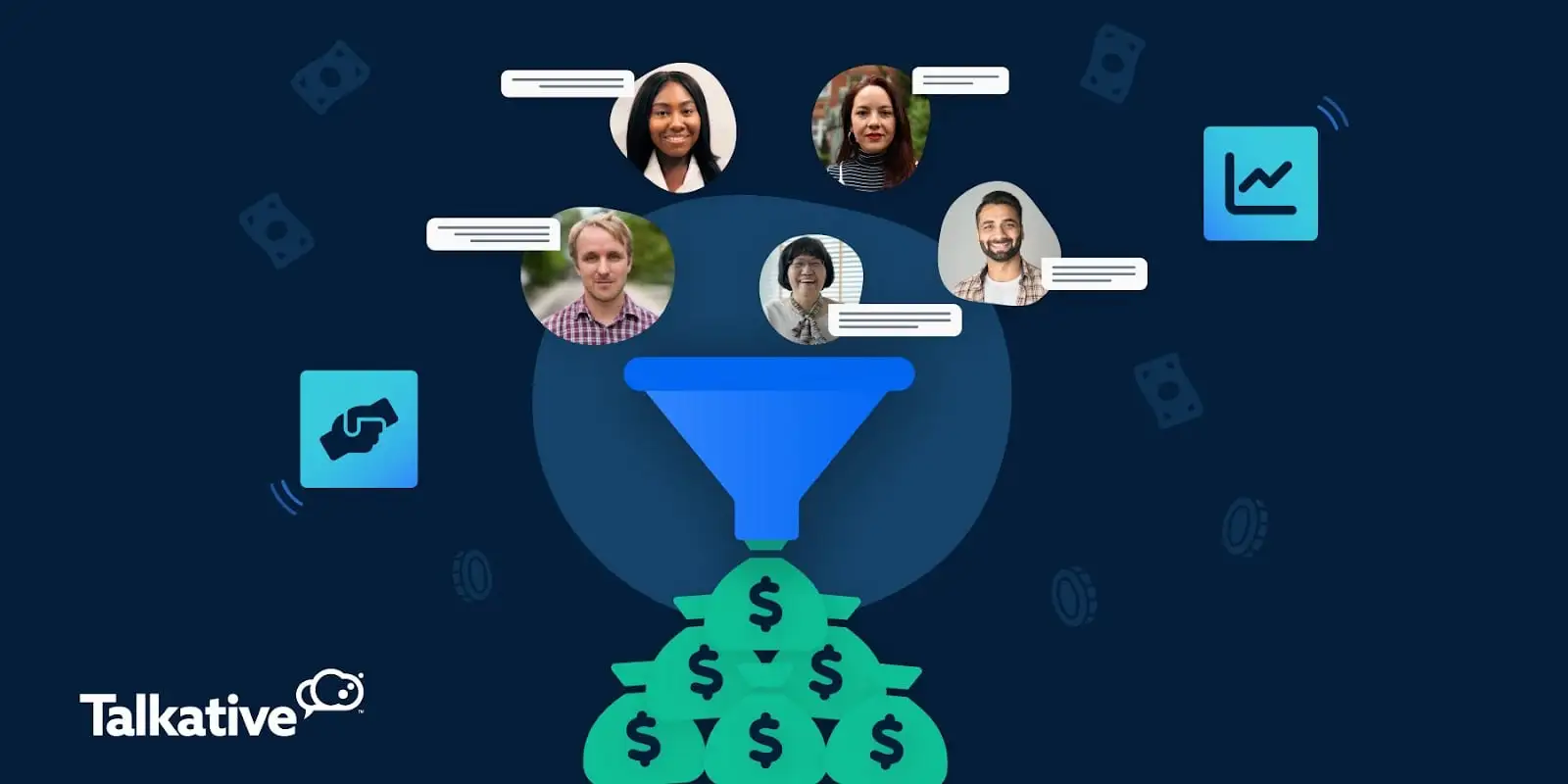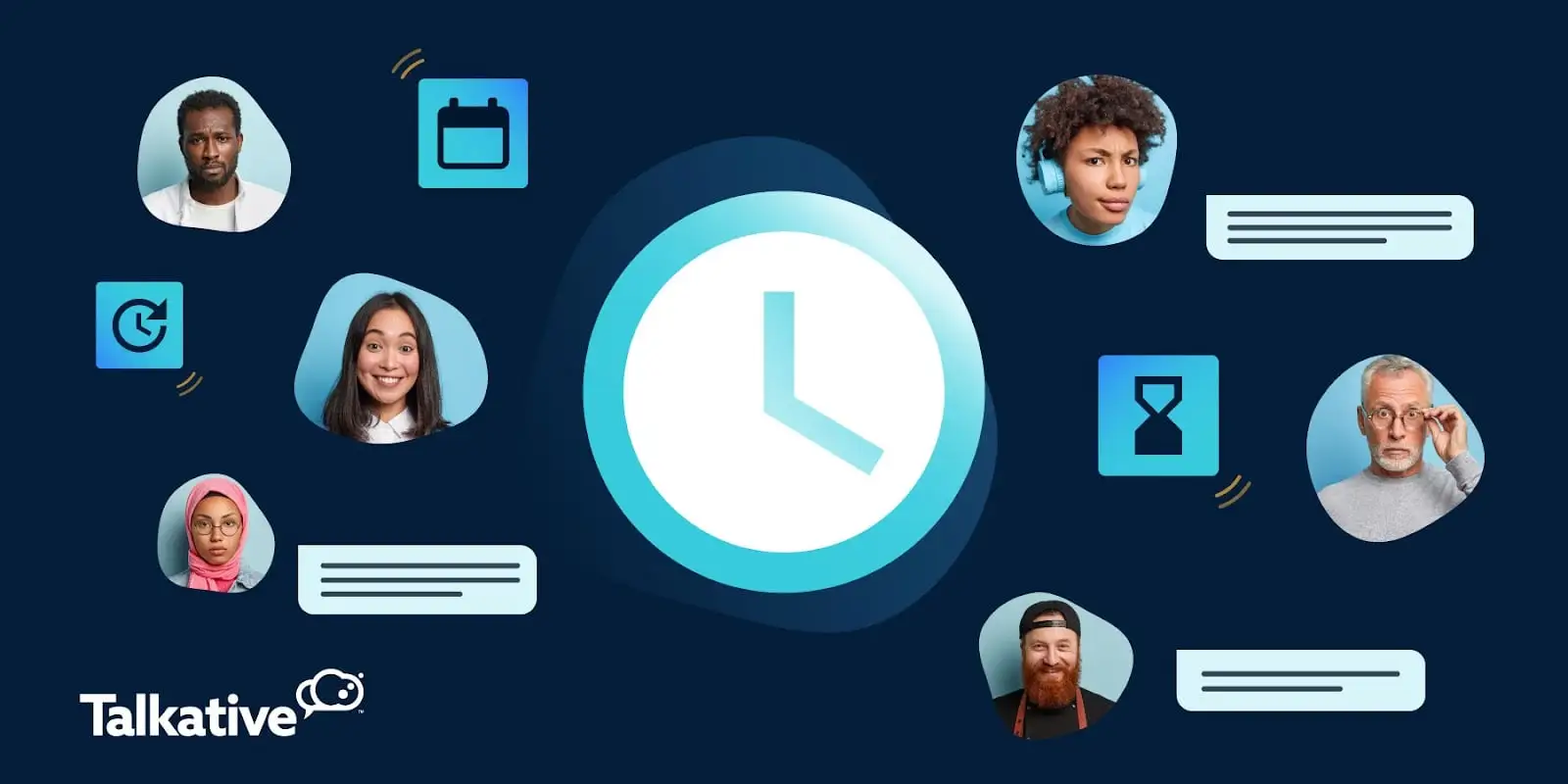When it comes to customer support, the time it takes you to assist customers is critical.
In fact, 60% of consumers think that even one minute is too long to wait on hold when calling a business.
If customers are stuck on hold in a long queue, you'll risk losing them and their loyalty. You could also end up with a damning reputation for poor customer service.
Unfortunately, businesses can't always assist every customer instantly. During busy periods, wait times and hold queues become unavoidable.
Luckily, there's a great solution to this problem - offering a customer callback option.
In this article, we'll cover:
- What is a callback option and how does it work?
- The key benefits of offering customer callbacks
- The next step to getting the most out of customer callbacks

What is a customer callback?
A callback option allows customers to request a callback from your support team, either as soon as possible or at a later time that suits them.
This makes it easier for customers to connect with your brand on their terms, without any disruption to their lives.
They no longer have to wait around on hold for support - instead, they fill out a simple request form via your website and continue with their day until you get back to them.
By offering a callback option, you'll enjoy shorter queue times and a cost-effective solution to high contact centre demand.

The benefits of a customer callback option
Let’s take a look at the key ways your business could immediately benefit from a callback option on your website.
1) Improved customer experience
Providing premium customer service and experiences should be a top priority for any business.
And what’s a great way to improve the customer experience? Getting rid of dreaded hold times when customers try to contact you.
The cheapest and most effective way of doing this is giving customers a callback option.
Case in point, a survey carried out by Software Advice found that 63% of customers prefer a callback option to waiting on hold - so it’s definitely within your interest to provide it.
Waiting in support queues is a waste of customer time and leads to frustration.
This negatively impacts their experience with your brand and even if they do eventually receive exceptional support - they'll still remember how long they had to wait for it.

2) Increased first-contact resolution rates
It’s no secret that customers like to get their problem resolved the first time they contact you, which is why first-contact resolution rate is a key performance metric for contact centres.
A great way to ensure more problems get resolved with just one call is to provide your agents with more context.
If an agent can look at customer information before taking a call, they can prepare for the conversation and be better equipped to resolve the issue.
Customer callbacks offer this exact opportunity.
With modern callback technology, a customer’s information, such as their name and webpages they’ve visited, can be accessed as soon as they click the callback option.
Through this information, the advisor gains an insight into who the customer is and what they might need before talking to them.
This significantly increases the chance of a first-contact resolution.
A higher first-contact resolution rate reduces the number of calls which shortens hold times, frees up agents, and makes them more efficient - no more talking to the same customer on five separate calls.
This metric is also important for the morale of your customer facing teams.
Your advisors want to resolve issues quickly and don’t want to deal with frustrated customers who have had to repeatedly contact your business.

3) Reduced abandonment rates
Call abandonment rates are another of the most important metrics for contact centres.
A high call abandonment rate is directly related to poor customer satisfaction.
If a customer gets placed on hold for an extended period of time, they often hang up and try again later.
This leads to a high number of repeat calls, which can make busy phone lines even busier, and creates unhappy customers.
A callback option is one of the best ways to reduce call abandonment rates.
Case in point, research indicates that the addition of a callback option can decrease call abandonment rate by up to 37%.
By giving customers the choice of getting a callback, you break the cycle of customer hanging up, ringing back 2 minutes later, being placed on hold, hanging up again, etc.
Consequently, you'll likely see your customer satisfaction increase as the abandoned calls decrease.

4) Lower costs
It's no secret that keeping a customer on hold costs you money.
On hold calls are often queued on a phone line that has high toll charges at your end, meaning you are being charged for every second a customer is left waiting on hold.
A callback option cuts these costs by taking customers out of the hold queue, reducing the associated toll charges.
It also helps to free up your phone lines, which will lower trunk costs.
By offering customer callback as soon as all your lines are busy, you could get rid of the hold line all together, further cutting your contact centre costs.

5) Increased inbound leads
Customers who want to call you are already warm leads, so it's important that you don’t lose out because your lines are busy.
A callback option prevents you from missing out on these potential opportunities.
It also grants you access to customer information, as we touched upon earlier.
This makes it easier for your advisors to capture inbound leads and convert them into customers.
In addition, as soon as a customer’s contact information gets stored in your system, you can re-target them with marketing campaigns.
This means that even if they don’t turn into a paying customer immediately, they could in the future.
Letting your customers request a callback doesn’t just ensure the retention of warm inbound leads, it also generates more leads from your website.
Callback software has come a long way from the web callback form customers used to find on your contact page.
Today, your website can be set up with widgets on key pages that proactively nudge customers to request a call.
This more engaging and interactive callback option encourages more customers to contact you, resulting in more leads.

6) Smoother peak times
Big spikes in call volume can be stressful. So how do you cope when you don’t have enough customer advisors to cope with the amount of calls?
A common solution is to hire more people.
While this might help to cope with calls during peak times, those same hires will be left sitting idle when call volume reduces.
Ultimately, it isn’t a very cost effective way to deal with peak times.
What is a good solution? A customer callback option.
Offering customer callbacks reduces the amount of people waiting in the queue which lessens the impact of peak busy periods.
This also helps call handlers do their job to a higher standard.
When they know there are lots of customers waiting on hold, they might rush their current interaction and not provide the level of customer service expected by your brand.
With a callback option in place, advisors can relax and take their time with each customer, delivering better customer experiences and the best results - even during peak times.
In line with this, you can also control when you allow customers a to request a callback.
This means you can set the callback option to only be available during your operating hours, or only during peak times.

7) Shorter call duration
Average call duration is another significant metric impacted by callbacks.
While the main aim of businesses is customer satisfaction, which means not rushing or cutting calls short just to keep the call time low, shorter call times are still beneficial.
The faster a customer issue is resolved, the quicker an advisor can move on to helping another customer.
Much like how it improves first-contact resolution rates by providing customer information before the call, a callback option can lead to shorter average call times for the same reason.
With a bit of background on the customer, the agent can prepare for the callback and have one or multiple solutions ready to present to the customer.
The amount of information collected before a callback is usually up to you.
For example, with Talkative, customer callback forms can be customised.
You can ask customers to fill out their reason for calling alongside their contact information, or just simply ask for their name and number.
The more information you ask for, the more your agents can prepare for the call and the quicker they can complete the interaction.

8) Improved attribution
Customer callbacks are a lot easier to track than traditional inbound phone calls.
If a customer sees your number on a webpage, then enters it into their phone to call you, there's no way of gathering any data on what has led them to make that call.
But with callback software, you can see the exact user journey that has resulted in a customer clicking the callback option.
This type of information is really useful for marketing and tracking the success of campaigns and content.
With Talkative, your callbacks can be linked to your Google Analytics account.
This means that, when a customer clicks the callback option from any page on your website, you can view this event in your analytics and see what page or PPC campaign the callback was requested from.
From a marketing perspective, this gives you useful insight into what campaigns and funnels are the most successful in getting customers to contact your company.
With this information, you can design future campaigns that you know will bring more inbound calls.

The takeaway
Customer callbacks are a great way to enhance the customer experience, capture more inbound leads, and improve contact center performance.
But if you want to get the most out of them, you need to make sure they’re powered by the right platform - a platform that's specifically designed to connect you with the right customers, via the right channels, at the right time.
That's where Talkative comes in.
Our platform provides a suite of customer contact channels including web calling, live chat, cobrowsing, video chat, messaging, and chatbots, plus deep integrations into systems like Salesforce and Mitel.
You'll be able to manage customer web callbacks, and all other customer interactions, within a single plane of glass.
As a result, your agents will be fully equipped to provide better experiences that will engage and convert more customers than ever before.
That's why the Talkative solution is the key to contact center profitability.
Want to see for yourself?
Book a demo with Talkative today, and check out our interactive product tour.



